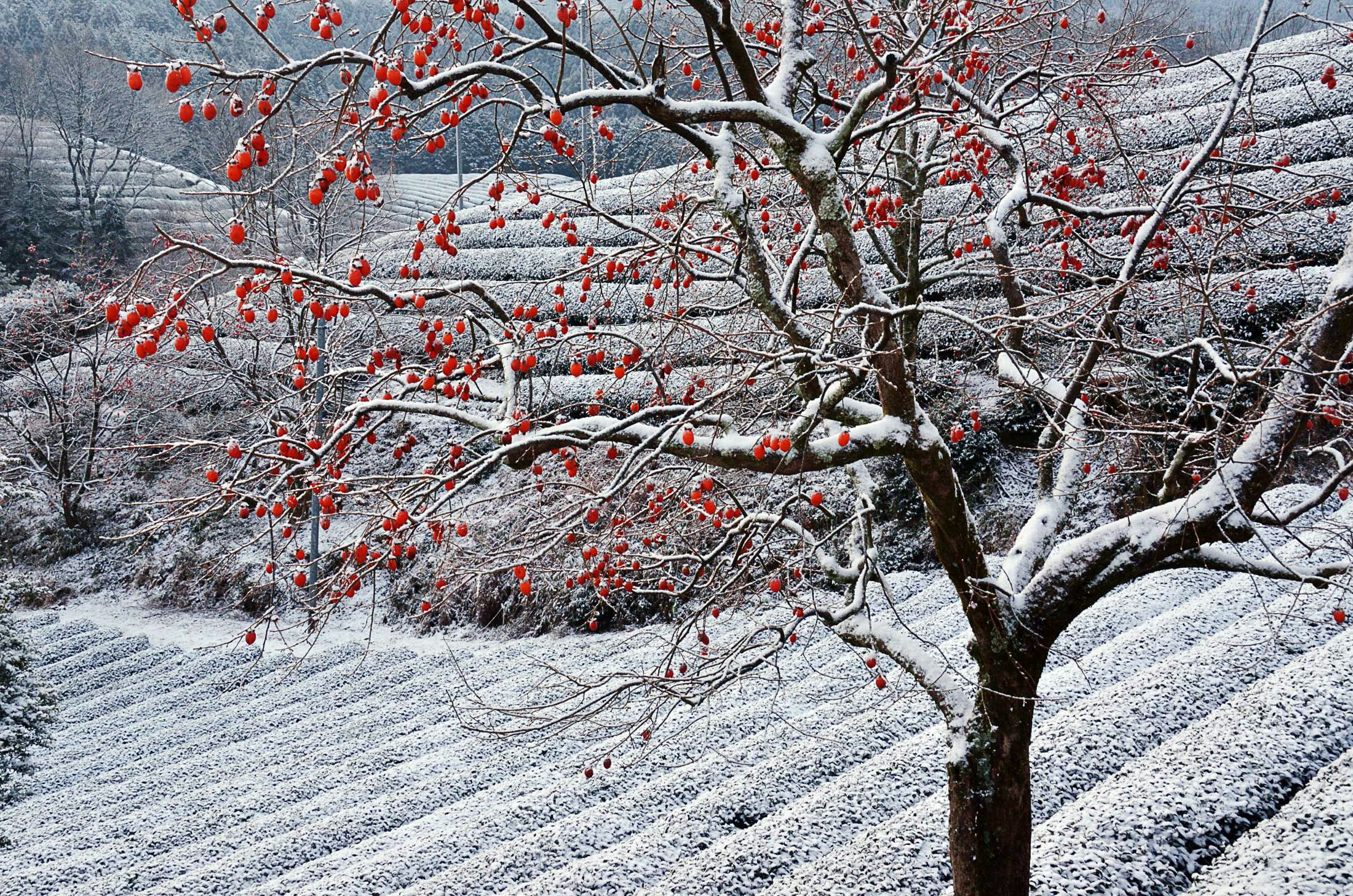From December to February, in the Kyoto area, the tea trees are in hibernation.
In this season, the farmers are less bound by the otherwise unceasing demands of the plant's growth, harvest and pruning cycles.
Farmers prepare for the Spring activities, maintain the worktools, take care of the outside amenities, protect the fields, ensure continuous space for sunlight.
It is also a time when the trimming and skiffing of the hedges can be operated. But mainly the tea shrubs are left dormant in the wind, the cold and the snow. And the tea growers can take a rest for themselves..
We had the privilege to cross paths with Mr Kenji Hashimoto, who captured with a touching sensitivity and artistic sense the landscapes of Ujitawara over the winter season.
Here the rows of tea trees are drawn like the lady fingers of huge tiramisus!.
The branches of a persimmon tree salute the careful alignment of domesticated tea bushes.
The mountain, the forest and the land of farmers arrange in a harmonious universe.
At times the nature at rest builds a path between the earthly ground and the heavenly elevations.
It is with gratitude and great emotion that we feature these moments provided by the kind courtesy of Mr Hashimoto.





“The fertile land stretches up to my home.
Field after field of tea create broad green spaces.
The locals trade it to make a living and care for the tea plants as if they are precious jade.
They cultivate them and trim them diligently, and fear the possibility of frost coming at night.”
Ujitawara is one of the 8 villages forming Uji. History knows this mountainous village as one of the first places where tea was grown in Japan from the 13th century. Tea produced in Uji was reputed as the finest in Japan and deserved to be called "real tea" (本茶 honcha).
The Ujitawara tea farmers community saw the birth of Soen Nagatani who in 1738 invented the process for sencha - rolled leaves - in times when tea was mostly consumed in its powdered form.

